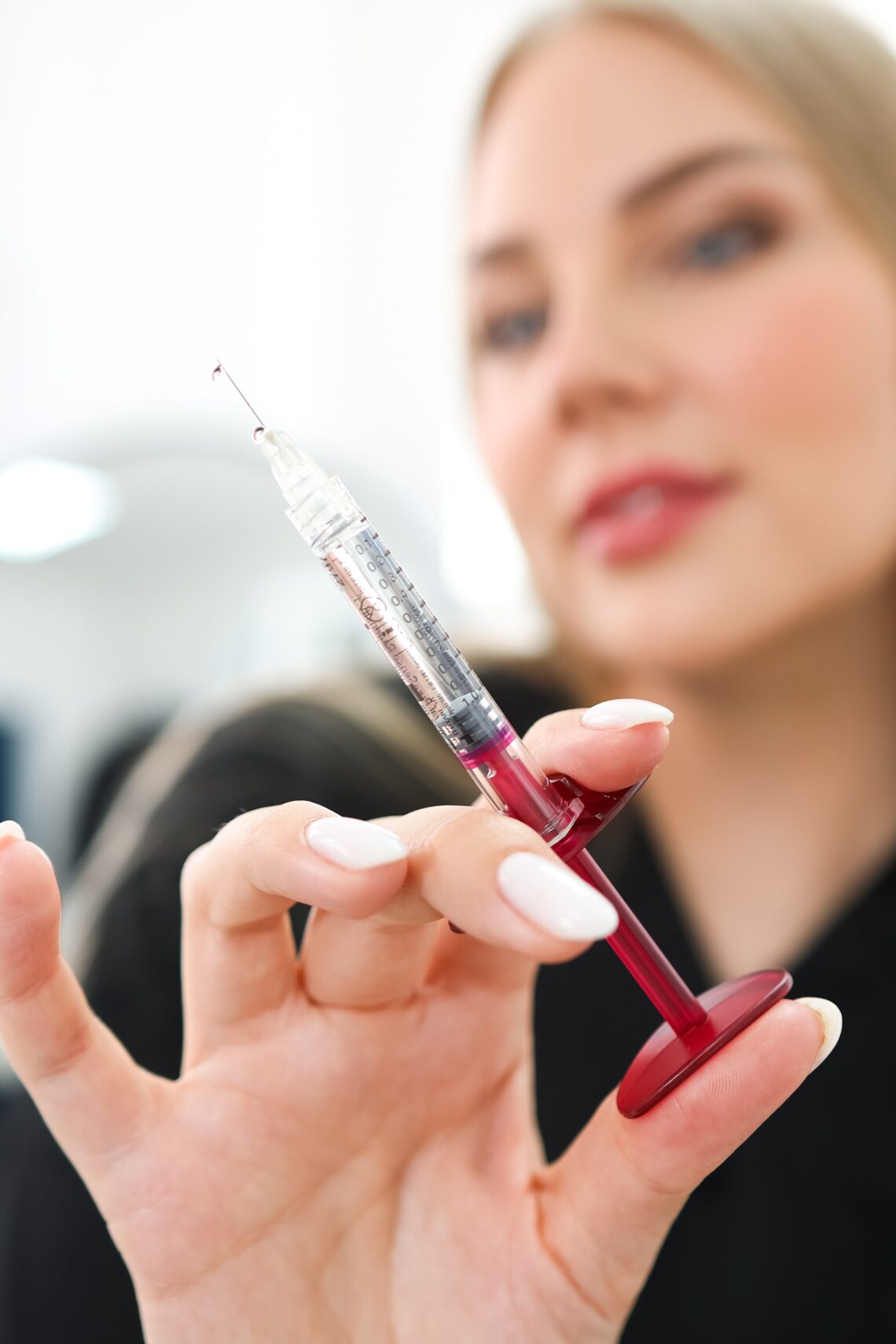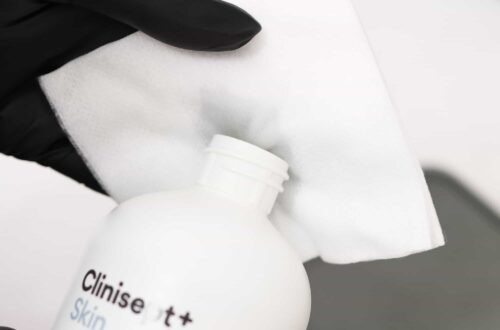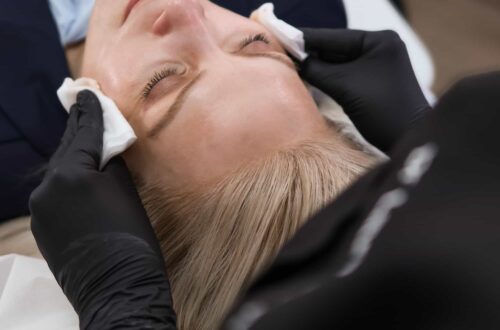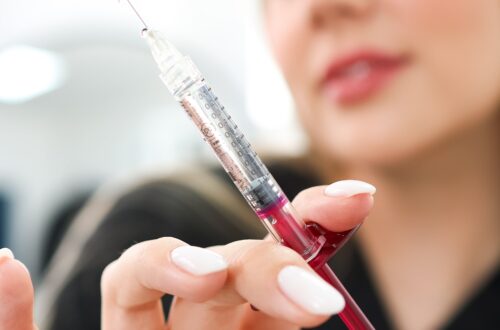Discover the Benefits of Dermal Fillers at It’s Me and You Clinic
What is Exosome Therapy for Skin Rejuvenation?
Exosome therapy for skin rejuvenation is a relatively new and innovative approach to anti-aging and skin health, leveraging the natural process of exosomes to deliver beneficial molecules and cellular signals to the skin.
Exosomes are tiny, membrane-bound vesicles that are secreted by almost all cells in the body. They contain proteins, lipids, and nucleic acids, including messenger RNA (mRNA) and microRNAs (miRNAs), which are exchanged between cells through direct cell-to-cell contact or via the bloodstream.
Exosomes play a crucial role in intercellular communication, mediating the transfer of bioactive molecules that regulate various physiological processes, such as inflammation, immune response, and tissue repair. In the context of skin rejuvenation, exosomes can be harnessed to deliver therapeutic signals that promote healthy aging and reduce signs of photoaging.
The process of exosome therapy for skin rejuvenation typically involves isolating exosomes from donor cells (such as platelets or adipose tissue) through a series of centrifugation steps. The isolated exosomes are then concentrated, purified, and formulated into a therapeutic solution.
Once applied to the skin, the exosomes deliver their contents directly to the target cells, including dermal fibroblasts, endothelial cells, and immune cells. This targeted delivery allows for precise regulation of cellular activity, promoting improved collagen synthesis, increased angiogenesis, and enhanced wound healing.
The scientific basis for exosome therapy’s effectiveness in skin rejuvenation lies in its ability to modulate the expression of genes involved in aging and age-related diseases. By introducing specific mRNA or miRNA molecules into the skin, exosomes can activate key signaling pathways that promote cellular renewal, reduce oxidative stress, and inhibit inflammatory responses.
One key molecule being explored for exosome therapy is platelet-derived growth factor (PDGF), a potent stimulator of collagen production and fibroblast activation. PDGF has been shown to enhance skin elasticity, improve wound closure, and increase the expression of anti-inflammatory cytokines.
Exosomes also contain proteins that can modulate the activity of immune cells, such as dendritic cells and T-cells, promoting a more favorable environment for tissue repair and regeneration. This immunomodulatory effect is thought to play a crucial role in reducing inflammation and improving skin texture and tone.
Another area of research focuses on the use of exosomes to deliver bioactive lipids, such as sphingolipids and glycolipids, which have been shown to regulate cellular signaling pathways involved in aging and age-related diseases. These lipids can promote cellular differentiation, modulate gene expression, and enhance tissue repair.
The optimal dosage and administration route for exosome therapy are still being investigated. However, early studies suggest that topical application of exosomes or microneedling with exosome-enriched serum can be effective in stimulating collagen production, improving skin elasticity, and reducing the appearance of fine lines and wrinkles.
As a relatively new and innovative approach to skin rejuvenation, exosome therapy holds promise for addressing a range of concerns associated with aging, including loss of skin elasticity, wrinkle formation, and age-related inflammation. While more research is needed to fully elucidate its benefits and limitations, the potential for exosomes to revolutionize our understanding of cellular communication and tissue repair is vast.
An increasing number of individuals are seeking alternative and non-invasive treatments to address various skin concerns, such as fine lines, wrinkles, and loss of skin elasticity.
Exosome therapy has emerged as a promising solution in the field of dermatology, particularly for skin rejuvenation near Hale, Surrey. This cutting-edge treatment utilizes exosomes, tiny vesicles secreted by cells, to deliver bioactive molecules that stimulate collagen production, improve skin elasticity, and reduce fine lines and wrinkles.
Exosomes are complex nanovesicles that contain proteins, lipids, and nucleic acids, which play a crucial role in intercellular communication. They facilitate the exchange of information between cells, allowing them to coordinate their functions and respond to environmental cues.
When it comes to skin rejuvenation, exosomes can be engineered to carry various bioactive molecules that target specific skin concerns. For example, they can be loaded with growth factors that stimulate collagen production, leading to improved skin texture and reduced fine lines and wrinkles.
In addition to stimulating collagen production, exosome therapy has been shown to improve skin elasticity by promoting the expression of elastin, a protein essential for maintaining skin firmness and flexibility.
The use of exosomes in skin rejuvenation is based on their ability to deliver bioactive molecules directly to target cells, allowing for more efficient and effective treatment. This targeted approach minimizes side effects and maximizes benefits, making it an attractive option for individuals seeking alternative treatments.
Exosome therapy for skin rejuvenation near Hale, Surrey involves the use of a specialized device that isolates exosomes from donor cells or synthetic sources. These exosomes are then loaded with bioactive molecules and injected into the target area, where they work to stimulate collagen production, improve skin elasticity, and reduce fine lines and wrinkles.
Exosome therapy is generally well-tolerated and has been shown to be safe for most individuals. However, as with any treatment, there are potential risks and side effects to consider, including redness, swelling, or inflammation at the injection site.
During a typical exosome therapy session, the treatment area is cleaned and prepared. A small amount of serum or cream may be applied to enhance absorption and comfort. The exosome solution is then injected into the target area using a specialized device, taking care to avoid any sensitive areas.
After the treatment, some individuals may experience mild side effects, such as redness, swelling, or inflammation at the injection site. These effects typically resolve on their own within a few hours and do not indicate any adverse reactions.
Results from exosome therapy can vary depending on individual factors, such as skin type, concerns, and overall health. However, many individuals have reported significant improvements in skin texture, tone, and appearance after a single treatment or series of treatments.
A course of exosome therapy for skin rejuvenation near Hale, Surrey typically consists of 3-6 sessions, spaced 4-6 weeks apart. This allows the body to fully respond to the bioactive molecules and ensures optimal results.
In addition to its benefits for skin rejuvenation, exosome therapy has also been explored as a potential treatment for various other skin concerns, including acne, rosacea, and hyperpigmentation.
In summary, exosome therapy offers a non-invasive, effective, and minimally invasive solution for skin rejuvenation near Hale, Surrey. By harnessing the power of exosomes to deliver bioactive molecules directly to target cells, this treatment promotes collagen production, improves skin elasticity, and reduces fine lines and wrinkles.
Exosomes have the potential to revolutionize the field of dermatology by providing a safer, more targeted alternative to traditional treatments like fillers, chemically peeling, or laser resurfacing. As research continues to uncover the benefits of exosome therapy, it is likely that this treatment will become increasingly popular among individuals seeking to achieve healthier, more radiant-looking skin.
Exosome therapy is a non-invasive, minimally invasive, and pain-free treatment that has gained significant attention in recent years due to its potential benefits for skin rejuvenation.
This innovative approach uses tiny vesicles called exosomes, which are naturally produced by the body, to deliver active molecules directly into the dermal layer of the skin. These exosomes are like tiny little rockets, carrying a payload of growth factors, vitamins, and other essential nutrients that help to stimulate collagen production, improve skin elasticity, and reduce fine lines and wrinkles.
The process of exosome therapy is relatively simple:
-
Contact Dr. Laura Geige for Expert Anti-Wrinkle Treatment Insights
- Application of Exosome Serum or Gel: A specially formulated serum or gel containing exosomes is applied topically to the skin. This can be done using a microneedling device, a brush, or simply as a face mask.
- Penetration into the Dermal Layer: The exosomes penetrate deep into the dermal layer of the skin, where they release their payload of growth factors and nutrients.
- Stimulation of Collagen Production: The released growth factors stimulate collagen production, which helps to improve skin elasticity and firmness.
- Improved Skin Texture and Appearance: As the exosomes work their magic, the skin begins to look smoother, brighter, and more even-toned. Fine lines and wrinkles start to fade away, giving the skin a more youthful appearance.
Exosome therapy can be customized to address various skin concerns, such as:
- Fine lines and wrinkles
- Dullness and lack of radiance
- Pigmentation and hyperpigmentation
- Acne and scarring
- Loss of skin elasticity
The benefits of exosome therapy are numerous, including:
- No downtime: Exosome therapy is a pain-free, non-invasive treatment that does not require any recovery time.
- Minimally invasive: The treatment is simple and straightforward, requiring only a few minutes per session.
- Safe for all skin types: Exosome therapy is suitable for most skin types, including sensitive skin.
- No side effects: The treatment is gentle and non-irritating, with no known side effects.
Get in Touch with Dr. Laura Geige at It’s Me and You Clinic Now
Exosome therapy has gained popularity in recent years due to its natural origins, safety profile, and effectiveness. As with any medical treatment, it’s essential to consult with a qualified professional or dermatologist to determine the best course of treatment for individual skin concerns. In the context of skin rejuvenation near Hale, Surrey, exosome therapy offers a unique and innovative approach to achieving healthy, youthful-looking skin.
Exosome therapy for skin rejuvenation involves a non-invasive and minimally invasive approach to promote healthy skin and reduce signs of aging.
The process begins with isolating exosomes from donor cells such as platelets or stem cells, which are then injected into the patient’s dermis.
In this context, the exosomes are designed to release their cargo of bioactive molecules, including growth factors, cytokines, and other signaling molecules that stimulate the skin cells to produce collagen, elastin, and other essential proteins.
These molecules work synergistically to enhance cell signaling, promoting a cascade of reactions that ultimately lead to tissue regeneration and repair.
The exosomes are designed to target specific areas of the dermis, such as the papillary and reticular layers, where they can stimulate the production of collagen, elastin, and other essential proteins.
As the skin cells respond to the bioactive molecules released by the exosomes, the skin begins to regenerate and produce new collagen, which is essential for maintaining skin elasticity and firmness.
This process can be repeated multiple times to achieve optimal results, making exosome therapy a flexible and adaptable treatment option for various skin rejuvenation goals.
Research has shown that exosome therapy can also promote wound healing and tissue regeneration by stimulating the proliferation of fibroblasts, the main cell type responsible for producing collagen in the dermis.
A study published by researchers at the University of Surrey demonstrated the efficacy of exosome therapy in promoting wound healing and tissue regeneration.
The study found that exosome therapy improved wound closure rates and enhanced tissue regeneration compared to a control group.
Exosome therapy has been shown to be safe and well-tolerated, with minimal side effects reported.
Additionally, the treatment is relatively painless and can be performed under local anesthesia or without it, making it an attractive option for patients seeking non-surgical skin rejuvenation treatments.
In the context of exosome therapy for skin rejuvenation near Hale, Surrey, patients can expect to experience a range of benefits including improved skin texture, reduced fine lines and wrinkles, enhanced collagen production, and improved overall skin tone and appearance.
- Reduced signs of aging such as fine lines, wrinkles, and age spots
- Improved skin texture and tone
- Enhanced collagen production and skin elasticity
- Promotion of wound healing and tissue regeneration
- Safe and well-tolerated with minimal side effects
- Painless treatment option with local anesthesia options available
Regulatory Framework and Clinical Trials
The regulatory framework governing exosome therapy for skin rejuvenation plays a crucial role in ensuring the safety and efficacy of this innovative treatment.
In the UK, exosome therapy falls under the purview of the Medicines and Healthcare products Regulatory Agency (MHRA), which is responsible for ensuring that medicinal products, including those used in clinical trials, meet certain standards of safety and quality.
The MHRA requires that any treatment using exosomes as an active substance undergo rigorous preclinical and clinical testing before it can be considered for market authorization.
Clinical trials are the primary means by which the efficacy and safety of exosome therapy for skin rejuvenation can be established. These trials typically involve three phases: Phase I, which focuses on assessing the safety of the treatment; Phase II, which evaluates its efficacy and side effect profile; and Phase III, which further refines the treatment’s efficacy and safety.
In the UK, clinical trials must comply with the Medical Research Council (MRC) Guidelines, which provide detailed requirements for the conduct of human clinical trials. These guidelines cover aspects such as informed consent, data management, and quality assurance.
The MHRA also has a dedicated unit, the National Institute for Health and Care Excellence (NICE), which evaluates the effectiveness and cost-effectiveness of new treatments, including those using exosomes for skin rejuvenation.
In addition to MHRA and NICE guidelines, exosome therapy for skin rejuvenation must also comply with the General Data Protection Regulation (GDPR), which regulates the collection and use of personal data.
Furthermore, the EudraLex regulations, which are EU-wide guidelines for medicinal products, including exosomes, must also be followed by any treatment using these molecules.
The National Institute for Health Research (NIHR) provides funding and support for clinical trials in the UK, including those investigating exosome therapy for skin rejuvenation.
Conducting clinical trials on exosome therapy for skin rejuvenation requires a thorough understanding of the regulatory framework and a commitment to adhering to these guidelines.
The use of exosomes in skin rejuvenation treatments is also subject to Good Manufacturing Practice (GMP), which ensures that products are manufactured under controlled conditions that meet strict quality and safety standards.
In the case of exosome therapy for skin rejuvenation, GMP guidelines must be followed in terms of aspects such as raw material sourcing, processing, and product release.
The overall regulatory framework for exosome therapy for skin rejuvenation is complex and requires a deep understanding of the various regulations and guidelines that govern its development and deployment.
The Regulatory Framework for Clinical Trials involves a complex and stringent process that must be adhered to ensure the safety and efficacy of treatments such as exosome therapy.
Exosome therapy is considered a regenerative medicine product by regulatory bodies such as the UK’s Medicines and Healthcare products Regulatory Agency (MHRA).
While there are no specific guidelines for exosome therapy, it falls under the umbrella of gene therapy and cell therapy, which are subject to stricter regulations.
The MHRA has granted permission for clinical trials on exosome-based treatments, including those for skin rejuvenation.
In order to conduct clinical trials, researchers must obtain approval from the MHRA, which involves submitting a detailed proposal outlining the trial’s objectives, methods, and expected outcomes.
Additionally, the MHRA requires that all clinical trials comply with Good Clinical Practice (GCP) guidelines, which establish standards for the design, conduct, recording, and reporting of clinical trials.
GCP guidelines also dictate that researchers must ensure the safety and well-being of trial participants, including obtaining informed consent and minimizing risks.
The MHRA also conducts regular monitoring of clinical trials to ensure compliance with regulatory requirements and assess the trial’s progress.
Furthermore, the European Medicines Agency (EMA) regulates exosome-based treatments in the EU, which means that clinical trials conducted in other EU countries must also comply with EMA regulations.
The FDA has also taken notice of exosome therapy and has issued guidance on the regulatory framework for regenerative medicine products, including exosomes.
Exosome therapy falls under the purview of the FDA’s Center for Biologics Evaluation and Research (CBER), which is responsible for regulating biologic products, including those derived from human tissues or cells.
The CBER requires that exosome-based treatments be manufactured in accordance with Good Manufacturing Practice (GMP) guidelines, which establish standards for the production of pharmaceuticals.
Regulatory bodies also require that clinical trials involving exosome therapy be registered with ClinicalTrials.gov, a database that provides access to information on ongoing and completed clinical trials worldwide.
A list of key regulatory agencies and their roles in overseeing exosome-based treatments are:
- UK’s Medicines and Healthcare products Regulatory Agency (MHRA)
- European Medicines Agency (EMA)
- FDA’s Center for Biologics Evaluation and Research (CBER)
In summary, the regulatory framework for exosome therapy involves a combination of regulations from national and international agencies, as well as adherence to Good Clinical Practice guidelines and Good Manufacturing Practice standards.
The regulatory framework for clinical trials, particularly in the realm of *_exosome therapy_*, is a crucial aspect to understand when it comes to innovative treatments such as skin rejuvenation therapies. Clinical trials involving *_exosomes_* and other types of cell-based therapies are subject to a range of regulations and guidelines that aim to ensure safety, efficacy, and compliance with established standards.
In the European Union, clinical trials involving medicinal products, including *_exosome therapy_*, must comply with the Regulatory Technical Rule (EU) No 536/2014. This rule sets out the requirements for conducting clinical trials in the EU, including the need for informed consent from participants and the requirement to report trial results.
In the United Kingdom, where Hale, Surrey is located, clinical trials involving *_exosome therapy_* must comply with the Human Medicines Regulations 2012, which regulate the clinical trial of medicinal products in humans. The Medicines and Healthcare products Regulatory Agency (MHRA) is responsible for overseeing clinical trials in the UK.
The Clinical Trials Regulation (_Clinical Trials Regulation (EU) 2017/745) also provides a framework for the regulation of medical devices, including *_exosome therapy_*-related devices. This regulation sets out requirements for the design, testing, and evaluation of medical devices, as well as the conduct of clinical trials.
Clinical Trial Authorization (CTA) is another key concept in the regulatory framework for *_exosome therapy_*. A CTA is a document that authorizes a sponsor to conduct a clinical trial within the EU. To obtain a CTA, the sponsor must demonstrate that the trial meets certain criteria, including the requirement to provide detailed information about the trial design, methodology, and risks associated with the trial.
Good Clinical Practice (GCP) is an international ethical and scientific quality standard for designing, conducting, recording, and reporting trials that involve the participation of human subjects. GCP ensures that clinical trials are conducted in accordance with ethical principles and provide high-quality data that can be used to support regulatory submissions.
Risk management is also an essential aspect of the regulatory framework for *_exosome therapy_*. Sponsors must identify, assess, and mitigate potential risks associated with the trial, including risks related to the administration of *_exosomes_* or other cell-based therapies.
In addition to these regulations, there are numerous guidelines and recommendations that provide further guidance on conducting clinical trials involving *_exosome therapy_*, such as those published by the US FDA and the European Medicines Agency (EMA).
The regulatory framework for clinical trials involving *_exosome therapy_* is constantly evolving, with new regulations and guidelines being published to address emerging issues and concerns. As such, it is essential that sponsors, investigators, and other stakeholders stay informed about the latest developments in this field.
The regulatory framework surrounding clinical trials, particularly those related to exosome therapy for skin rejuvenation, is a crucial aspect to consider when evaluating the potential of this treatment approach.
In the UK, clinical trials involving human subjects are subject to regulation by the Medicines and Healthcare products Regulatory Agency (MHRA) under the Human Medicines Regulations 2012. These regulations outline the requirements for the design, conduct, supervision, and reporting of clinical trials involving investigational medicinal products, including those that may involve exosome therapy.
Exosomes are naturally occurring extracellular vesicles that can be isolated from various cell types, including skin cells. They contain a complex mixture of RNA, DNA, and proteins that can modulate cellular function and communication. Recent research has shown that exosomes derived from stem cells, platelets, or other cell types may have potential therapeutic applications in wound healing, tissue repair, and skin rejuvenation.
Several universities and research institutions in the UK are currently conducting studies on exosome therapy for skin rejuvenation. For example, a team at the University of Cambridge has been investigating the use of exosomes to promote wound healing and tissue repair. Other researchers have explored the use of exosome-based therapies for acne treatment and anti-aging.

Other regulatory requirements for clinical trials in the UK include compliance with the General Data Protection Regulation (GDPR), which sets out data protection principles and requirements for working with personal data, as well as the Research Ethics Framework for International Collaborative Trials, which provides guidance on conducting research involving vulnerable populations.
The MHRA has established a system of regulatory approval and oversight to ensure that clinical trials are conducted in a safe and ethical manner. This includes the requirement for investigators to obtain informed consent from participants before enrolling them in a trial, as well as the need to conduct regular safety monitoring and report adverse events promptly.
Exosome therapy has shown promising early results in preclinical studies, with some research suggesting that it may be effective in promoting skin rejuvenation by stimulating collagen production, reducing inflammation, and improving tissue repair. However, further research is needed to fully understand the efficacy and safety of exosome therapy for skin rejuvenation.
The development of exosome-based therapies will require significant investment in clinical trials and regulatory affairs. Researchers, regulators, and industry stakeholders must work together to establish clear guidelines and regulations for the use of exosomes as therapeutic agents, while ensuring that participants are properly informed and protected throughout the trial process.
Some of the key challenges facing the development of exosome therapy include:
- Establishing a robust regulatory framework for exosome-based therapies
- Developing clear guidelines for the collection, isolation, and characterization of exosomes
- Investigating the safety and efficacy of exosome therapy in human subjects
- Ensuring transparency and accountability throughout the trial process
In the context of skin rejuvenation near Hale, Surrey, researchers will need to navigate these challenges while also considering the specific needs and concerns of local participants. This may involve partnering with local healthcare providers, engaging with community leaders, and ensuring that trials are conducted in a way that is sensitive to the local population.
Fashionably Balanced Plinr Fringe Beverly Hills Melissa Neufeld Made by Penny
- Alluzience Longer Lasting Botox Near West Molesey, Surrey - April 26, 2025
- Alluzience Longer Lasting Botox Near West Molesey, Surrey - April 26, 2025
- Alluzience Longer Lasting Botox Near West Molesey, Surrey - April 26, 2025




